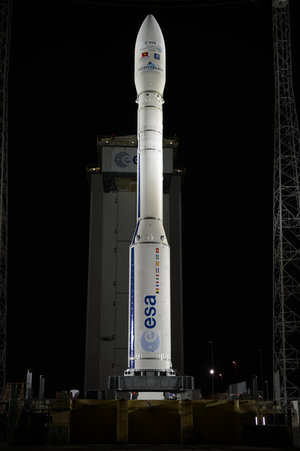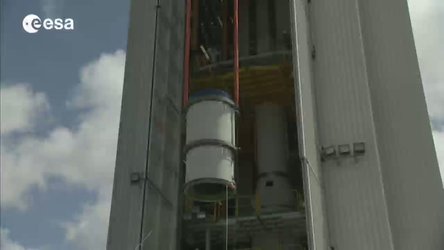

Vega VV02 ready for liftoff
Thank you for liking
You have already liked this page, you can only like it once!
ESA’s Vega VV02 rocket is ready for liftoff, 4 May, 2013 (GMT).
Vega VV02 is the first of the five flights scheduled in ESA’s Vega Research and Technology Accompaniment – VERTA – programme, which aims to demonstrate the flexibility of the launch system. At a minimum rate of two launches per year, the programme will allow the smooth introduction of Vega for commercial exploitation.
VV02 will loft Proba-V, the first of four ESA missions, into space. Proba-V carries a reduced version of the Vegetation instrument currently flying on the Spot satellites to provide a daily overview of global vegetation growth.
This first VERTA flight will also demonstrate Vega's capability to launch multiple payloads into two different orbits. Proba-V, the prime payload, will be released first. The remaining two payloads: Vietnam Natural Resources, Environment and Disaster Monitoring Satellite (VNREDSat-1) built by Astrium for the Vietnamese government and the Estonian cubesat (ESTCube-1) will be released later, into a different orbit.
-
CREDIT
ESA–S. Corvaja, 2013 -
LICENCE
ESA Standard Licence

Vega VV02 ready for liftoff

Vega VV02 ready for liftoff

Vega VV02 ready for liftoff

VEGA VERTA

